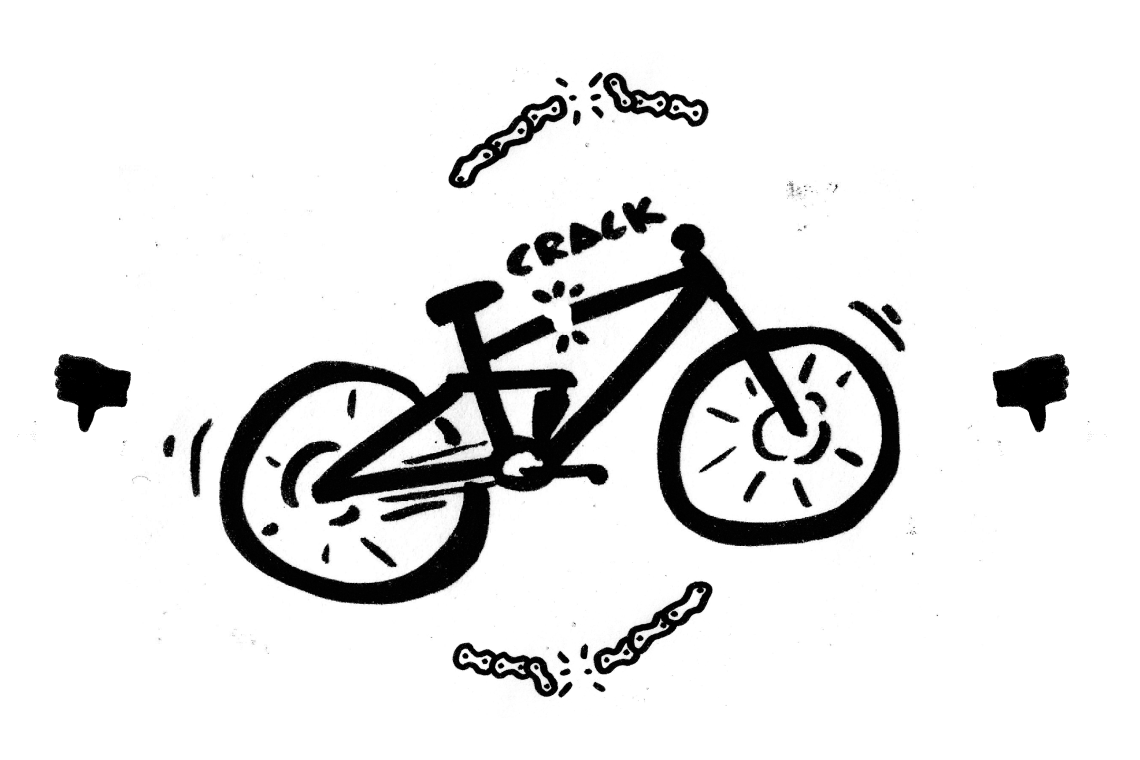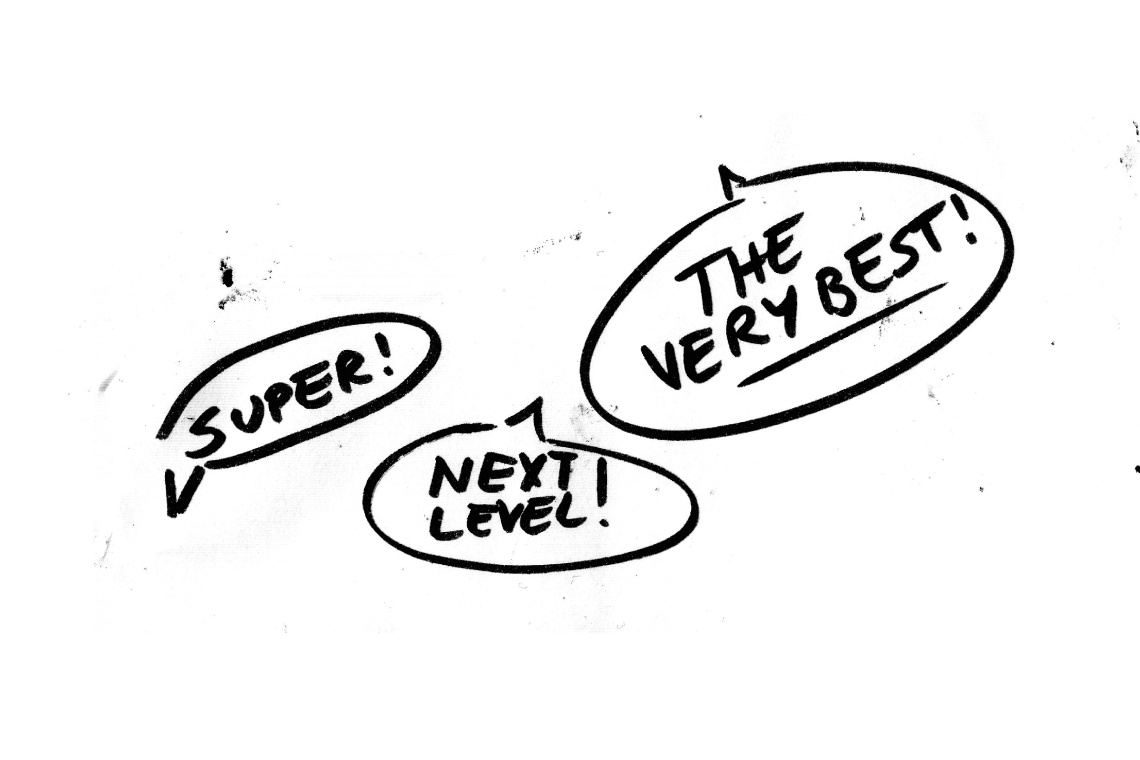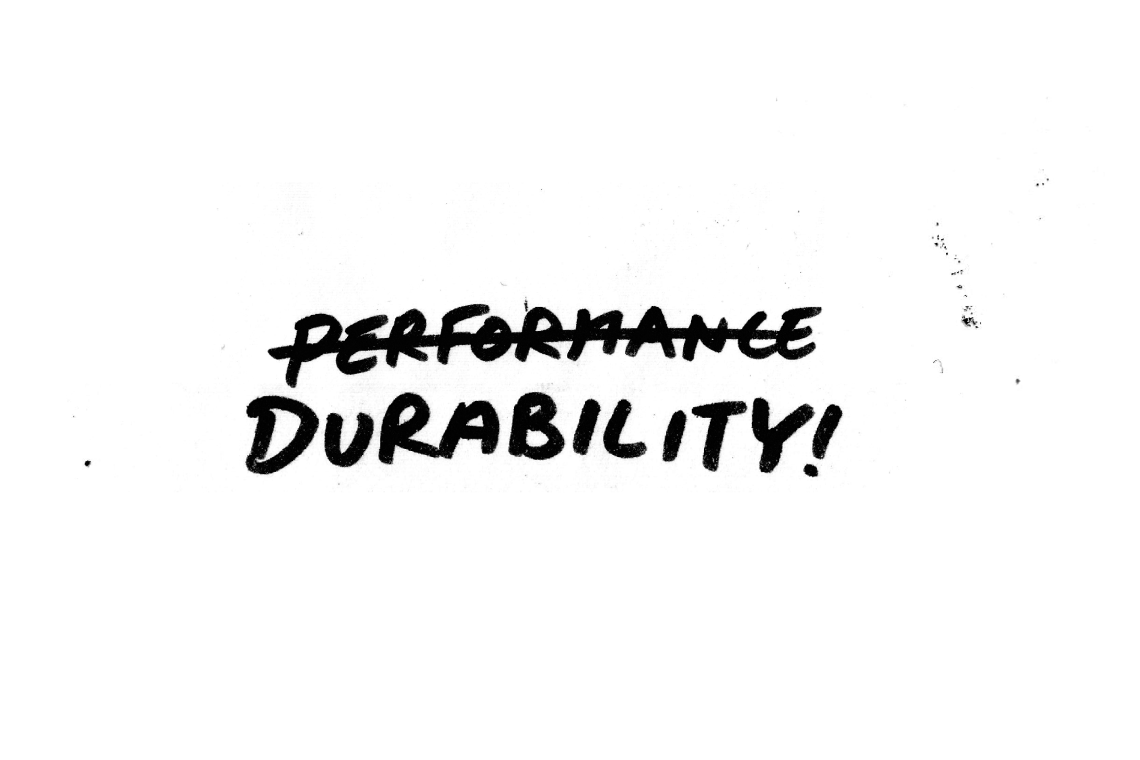Innovation sucks! Whether mountain bikes, eMTBs or road bikes, the guys and girls from marketing and development still try to trump each other with superlatives. It’s all about marginal improvements and seemingly never-ending performance gains. But do we actually need that? What is it that makes riders happy and leads to long-lasting trail fun?

A lot of stuff happened at ENDURO this year that shouldn’t have happened. We’ve never gone easy on bikes and products and – like our test riders every now and then – we often push them to their limits. This year things were different. Besides excellently functioning bikes and components that resulted in a lot of positive impressions, unfortunately, there were a lot of failures, too. From worn out bearings, defective forks and shocks to countless blown wheels and questionable, to say the least, paintwork damage on the frame. We saw it all. This didn’t just apply to the bikes ridden by our burlier test riders, some of whom weigh just over 100 kg, have EWS racing experience and typically give their equipment a hard time. Lightweights, like our 70 kg editor-in-chief, who is known to have a very smooth riding style, also reported similar failures on their test bikes.

What benefit do we get from the glamour of Formula 1, EWS or Tour de France in everyday life?
What good is a 8.713% performance improvement on the rear suspension if the bearings in a complex linkage get worn out in a matter of months if not weeks? Or if more than 80% of riders cannot take advantage of the full performance because they don’t know how to find the perfect setup? Or position on their bike? As bikers, we have the luxury and the privilege of riding almost the exact same bikes that top EWS athletes, Tour de France winners, Olympians and World Cup stars use to achieve superhuman feats. There’s a certain level of fascination and sex-appeal to it, but it usually comes with a catch. These bikes and components are usually designed for maximum performance and intensive servicing rather than maximum reliability and durability. However, most consumers don’t benefit from this performance in their day-to-day lives, especially when setting the bike up is complex and the components require a lot of maintenance.

The bike world has been obsessed with performance for decades, and regardless of whether it’s marketing or development, they both want their products to go faster, higher, further, lighter, to be more efficient, and recently more fun. But what if a defect causes the fun to come to a grinding halt after a few months or even days? What if the after-sales service sucks and you have to wait weeks to get spare parts or answers? Is the bike world too preoccupied with the glamour of pro racing, marginal improvements and never-ending performance gains instead of solving the simple problems everyday riders encounter? We’ve always seen a lot of riders on the trails and in bike parks whose setups are clearly wrong and the recent bike boom has only made matters worse.

The corona pandemic as an excuse?
We know that most bike brands are doing their best. Almost everyone in the industry is currently facing huge challenges and they’re trying to go about them as best they can, juggling lots of different risks, uncertainties and unknown variables. Sure, we should give them credit and respect for that, even if the things customers are experiencing can be very frustrating. But we’re talking about customer service, availability, quality and the supply of spare parts. The corona pandemic has been running amok for almost two years, causing new, temporary problems while also revealing structural issues that have been present in the bike industry all along. And just because something has worked for decades doesn’t mean that it was good!
You’ve got increasing demand on the one hand and changing workforces, short-term production stoppages and factories that are at full capacity on the other. Brands are fighting over super tight production slots that hardly allow time for corrections in the manufacturing process. As a result, quality drops. In fact, hardly any manufacturer has time to postpone the manufacturing process for days or weeks to make small improvements or correct issues that come up during the mass production of a new product. Manufacturing has become a dog-eat-dog world in which the big players and manufacturers that have excellent, long-standing relationships win. Nevertheless, if you give up your production slot, you must wait until a new one becomes available – considering the unprecedented long lead times this can be a matter of survival for some brands. In the past, extensive quality controls often resulted in corrections and postponements in production, whereas today brands must choose between giving up their production slot or getting the product to the market. On top of that, you’ve got the development of new products and the unavoidable teething problems that come with growth. The fact that all of this is currently happening at the same time just makes the problems that much worse!

The vicious circle of the bike industry
For many brands their model is: new year, new innovations, new models. Short one-year product cycles are still common in the bike industry, though numerous brands are increasingly trying to steer away from the classic model years. Customers, and thus the industry itself, are caught in a hamster wheel that is spinning ever faster in search of marginal improvements and new colours, chasing the hype surrounding the latest and hottest shit. Biking has developed into a trendy sport and in many respects it’s like the fashion industry, where trends come and go faster than you can blink.
Unless you’re going for a win at the Tour de France, EWS or DH World Cup, the only thing that matters is long-lasting trail fun. Or if you want to be trendier still, sustainable trail fun. The good news is that we can make a big difference and make biking more sustainable by shifting our development and communication focus ever so slightly.
As such, it’s up to us to ask ourselves what is more important:
- The ultimate in lightweight construction or long-lasting durability?
- Special, one-of-a-kind solutions or proven and easily replaceable standard components?
- Exclusivity and bling factor or timelessness?
- Robust equipment or maximum performance?
Standard is the new innovation
Sustainability and resource conservation are a big topic for companies around the world and should become even more so in the future, and not just for their image. This includes several interrelated measures, from sourcing to production, service life, reparability and recycling. We can already foresee the return of more standardised components in the bike industry. The delivery bottlenecks, bike boom and unsurpassed demand are putting many bike brands under enormous pressure and in some cases driving them to the brink of ruin. The result is that more and more bike brands are merging or being bought up, resulting in fewer and fewer small bike shops and more and more bike corporations. To the core scene, this seems like a slap in the face and we can understand their apprehension, picturing the sport being run by managers in suits. But this development can’t be stopped and you should look at it from another perspective. It doesn’t automatically mean that sooner or later you’ll have to say goodbye to your favourite local brand. Mergers often happen in the background, ensuring better planning and greater consistency in product ranges and solutions. As the industry undergoes a massive shift it’s the only way for these brands to stay alive.

Corporations are naturally interested in model platforms and more standards. This renewed interest in standards can make it easier for consumers to get spares, ensures easier repairability and in the best case also results in a longer service life, like what you’ll find in the automotive industry. That’s good news because you – our readers – own your bikes for about 3 years on average. The lifespan, quality and repairability of a bike should be at least as much of a selling point as a product’s performance. Brands must put greater emphasis on the availability of spares, ease of maintenance and additional protection for your bike, such as protective tape, replaceable parts and longer maintenance cycles. To act sustainably and in a way that conserves finite resources, we need a general change of heart – and corporations! Okay, got it all out of your system already? Then let’s continue. It’s the same with sustainable farming. Those who have the luxury of getting produce from a local organic farmer can count themselves lucky. But you can’t save the world that way because you won’t achieve critical mass with small organic farmers alone. It takes big corporations to make a real impact and change people’s thinking. In the case of grocery supermarket chains such as Walmart, that isn’t very sexy, but they’re the ones that can effect lasting change.

If we suffer a major breakdown on the trail and get stranded shortly after buying a new bike, who benefits from the marginal improvements that promise to make us go higher, faster and further? Therefore, the ultimate in performance and innovation shouldn’t take precedence over quality, service life and the availability of spares. For that to change corporations must flex their muscles, steering the industry in the right direction through a change of heart. As customers, we can only vote with our credit cards but we can also send a clear signal as a community.
Take part in our survey and tell us about your…
Did you enjoy this article? If so, we would be stoked if you decide to support us with a monthly contribution. By becoming a supporter of ENDURO, you will help secure a sustainable future for high-quality mountain bike journalism. Click here to learn more.
Words: Peter Walker, Robin Schmitt Photos: Julian Lemme









